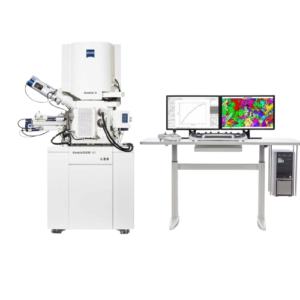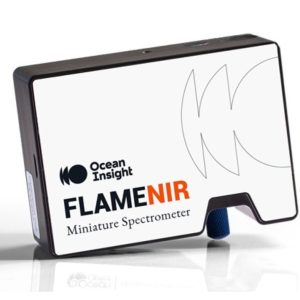Description
A lyophilizer, also known as a freeze dryer, is a sophisticated device used to preserve perishable materials or make substances more convenient for transport and storage by removing water through the process of lyophilization or freeze-drying. It is widely used in the pharmaceutical, biotechnology, food, and research industries for drying heat-sensitive and biologically active materials.
Principle of Lyophilization:
Lyophilization works on the principle of sublimation, where water transitions directly from a solid (ice) to a vapor without passing through the liquid phase. This is achieved by freezing the product and then reducing the surrounding pressure to allow the frozen water in the sample to sublimate.
Main Stages of Freeze Drying:
1. Freezing:
The material is frozen, converting water into solid ice. A proper freezing step ensures uniform ice crystal formation, which is crucial for effective drying.
2. Primary Drying (Sublimation):
Under reduced pressure (vacuum), the ice sublimes directly into vapor. This stage removes the bulk of the water (~95%).
3. Secondary Drying (Desorption):
Removes residual moisture bound to the material by increasing the temperature slightly under vacuum. This achieves a final moisture content as low as 1–4%.
Components of a Lyophilizer:
Vacuum chamber: Holds the product during drying.
Condenser: Traps and collects sublimated water vapor as ice.
Refrigeration system: Cools the product to freezing temperatures.
Vacuum pump: Reduces pressure for sublimation.
Heating system: Supplies energy for sublimation and desorption.
Applications:
Pharmaceuticals: Preservation of vaccines, antibiotics, enzymes, and hormones.
Biotechnology: Stabilization of proteins, DNA, RNA, and cell cultures.
Food industry: Instant coffee, dried fruits, and ready-to-rehydrate meals.
Forensic science and museums: Preservation of biological and historical specimens.
Advantages:
Maintains structural and chemical integrity of heat-sensitive products.
Long shelf life of dried material without refrigeration.
Low moisture content prevents microbial growth and degradation.
Enables easy rehydration with minimal loss of original properties.
Limitations:
Expensive equipment and high operational costs.
Time-consuming process (can take hours to days).
Not suitable for materials with high oil or sugar content (may not freeze well).
Requires airtight packaging to prevent moisture reabsorption.
—
Deep Freezer – Long Description
A deep freezer is a refrigeration unit designed to store samples, substances, or food at extremely low temperatures, typically -20°C, -40°C, or -80°C, depending on the model. In laboratory and clinical environments, deep freezers are critical for the long-term preservation of biological samples, reagents, enzymes, and pharmaceuticals.
Principle of Operation:
Deep freezers use compressor-based cooling systems (or sometimes cascade refrigeration for ultra-low temperatures) to lower and maintain internal temperatures. The principle relies on heat exchange and insulation to maintain a constant, ultra-low temperature environment.
Types of Laboratory Deep Freezers:
1. -20°C Freezers:
Suitable for short-term storage of samples like buffers, reagents, and culture media.
2. -40°C Freezers:
Used for medium-term storage and more sensitive biologicals.
3. -80°C Ultra-Low Temperature (ULT) Freezers:
Essential for long-term storage of enzymes, DNA/RNA, cell lines, tissue samples, and vaccines.
Components:
Compressor and condenser: Maintain cold temperatures via refrigerant cycles.
Insulated chamber: Minimizes heat entry.
Digital controllers: Allow precise temperature setting and monitoring.
Alarms: Signal temperature deviations, door openings, or power failure.
Racks and storage systems: Organize samples for easy access.
Applications:
Biomedical and clinical labs: Storage of blood, tissues, and diagnostic specimens.
Molecular biology: Preserving DNA, RNA, and enzymes.
Pharmaceuticals: Long-term stability testing and vaccine storage.
Food industry: Freezing perishable food samples and ingredients.
Advantages:
Excellent for preserving sample integrity over extended periods.
Minimizes enzymatic and microbial degradation.
User-friendly and relatively fast cooling.
Many models offer backup systems and alarms for sample protection.
Limitations:
High power consumption.
Requires regular maintenance (e.g., defrosting, filter cleaning).
Space-intensive in some lab settings.
Risk of sample loss during prolonged power outages without backup.
—
Summary Table:
Feature Lyophilizer (Freeze Dryer) Deep Freezer
Main Function Removes water by sublimation Stores samples at sub-zero temperatures
Working Principle Sublimation under vacuum Refrigeration and thermal insulation
Temperature Range -40°C to +30°C (staged) -20°C to -80°C
Used For Drying biologicals, foods, pharmaceuticals Long-term storage of biological materials
Sample State Dried powder Frozen
Typical Duration Hours to days Continuous (for storage duration)
Cost High (equipment and operation) Moderate to high (depends on model)






Reviews
There are no reviews yet.